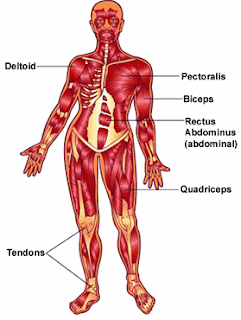Contenidos:
-El sistema locomotor: partes que lo componen y funciones principales.
-El esqueleto: huesos principales.
-Los músculos: algunos importantes.
-Las articulaciones principales.
-Hábitos de cuidado del sistema locomotor y prevención de accidentes.
Criterios de evaluación:
-Conoce los distintos aparatos que forman parte del sistema locomotor.
-Explica las funciones del sistema locomotor.
-Nombra los principales huesos, músculos y articulaciones y los localiza en su cuerpo.
-Comprende la necesidad de adoptar hábitos saludables.
Vocabulary:
Locomotor system
Movement
Skeleton
Bone
Muscle
Joint
Healthy habits
Hard
Soft
Elastic
Tough
Bending
Our locomotor system helps us move. It allows us to dance, run and play football! It is composed by the skeleton, the muscles and joints.
Skeleton and bones
Bones are hard. They support our bodies and protect the organs. For instance, our skull protects our brain from being damaged.
Muscles
Muscles are soft, but elastic and tough. They help our skeletons move.
Joints
Joints are the parts of the body where two bones meet. They allow us to bend.
We must take care of our locomotor system.











